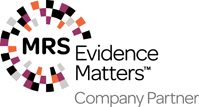Maximising Victim Satisfaction: UK Police Force
Police forces in the UK run ongoing research with victims of crime to measure and track their perceptions of the services provided by the police. These include call handling, timeliness, treatment, action taken, investigation and follow up.
We used a number of advanced analysis techniques to identify priority improvement areas to maximise satisfaction with the service provided by the police. These techniques included sub group analysis (victimology), key driver analysis (regression) and text analytics.
The results helped the police better understand the victim experience, identify the most important touchpoints in the process and prioritise improvement areas.






